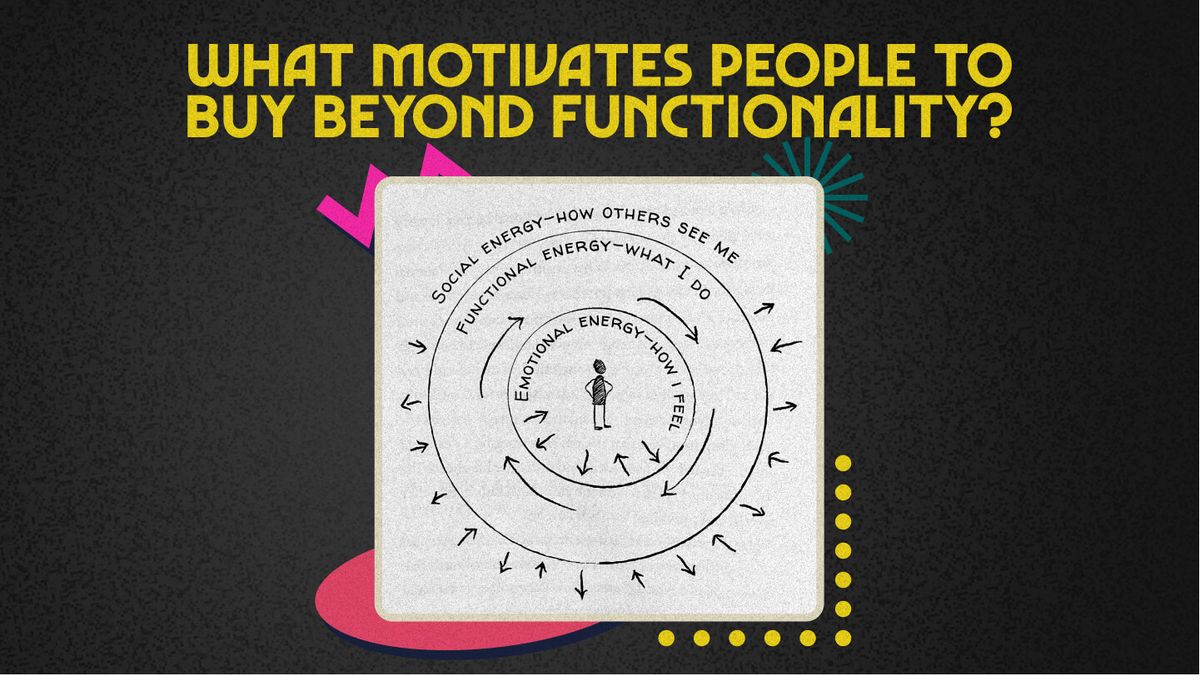Motivators that help you create and sell products (beyond functionality)
Learn how to identify and incorporate emotional and social motivators into your product development and sales strategy.

Back in 2019, I was a struggling design agency founder.
When we started off, we were fresh in our market. Nobody knew us. We had no authority in the space and hardly any credibility.
But we pushed our ideas out in formats like workshops to promote our service.
We gradually started to exist in the minds of our prospects.

Doing this a few times landed us a discovery session with an invested startup in the health space. Our first big break. I was buzzing.
A friend (let's call him Greg) who we met through a workshop had recommended us.
Greg knew that to do his job better (as their new CTO), going through our design sprint process was the best option given their circumstances.
Their platform to enable online medicine delivery had a VERY poor adoption rate. He recognised that it was a fundamental issue with the product and needed our help.
After the initial discovery session, we sent off proposals to the founders but the trail went cold. We didn't hear back from them.
Greg later revealed that we were in competition for the business. But it wasn't with another agency. Instead, we were going to lose it to "doing more marketing."
The founders were looking to grow their business and thought marketing was the right option.
But Greg knew that no amount of marketing can save a platform with poor adoption. So he put his ass on the line for us and made sure they understood our value and why it was the best option.
Fast forward 4 weeks later they went from being doubters to believers.
In a retrospective meeting, they applauded Greg for pushing them to make the choice to go with us. And at that moment Greg said "Thank you for believing in me" to the founders.
As someone who does a lot of research into understanding why people buy, I kept thinking back to this moment.
Before running the agency, I came from an engineering background and back then I resorted to looking at things through a functional, systems perspective.
It's how I approached selling that service as well.
The process we used sped up product research and design by at least 4 months. But people often didn't buy us for that reason.
In fact, we may have lost more proposals because we communicated our value in this manner.
I was missing something important.
Digital products miss this too
In 2014, Intercom launched a map feature. It showed where all your customers were in the world.
When they built it, they thought it was cool but they couldn't understand why. Marketing it became an uphill battle.
So they started observing how people were using it and they realised it made their customers look impressive.
They used the feature to show it off at trade-shows, on Twitter and to investors. The feature was actually a show piece!

If they hadn't realised this, the would've tried to make a more functional map with better geographical accuracy. Or worse, kept building to no-end.
But that wouldn't have resonated with what customers were actually trying to get done.
So what did they do with this info? They made a "worse map."
Instead of adding more functional utility to the product, they created a map that was worth sharing.

So, what's happening here?
What was I missing?
There's some sort of demand here but how do you identify and incorporate it into how you build, market and sell products?
Going beyond functional selling
It's only until I read Bob Moesta's Demand Side Sales book that I started to get it.
Bob explains that apart from what functionally motivates people to make progress and use something, there's two other motivators:
- Emotional motivators - What are the positive and negative emotions that are driving the customers purchase/utilization? Their fears, frustrations and desires?
- Social motivators - How would other people perceive, respect, trust or acknowledge the customer?
Emotional and social motivators are often interrelated and play well into each other.
For example: How proud would their family and friends be is a social motivator. And, as a result, how proud would they feel about themselves is an emotional one.

In Greg's case, he was championing us when he had freshly joined a company that was struggling.
There was a lot at stake for him.
The downside was that it could have negatively affected how the founders perceived him for the rest of his tenure.
But the upside is the emotional confidence that whatever he worked on would have succeeded and resonated with their audience.
In Intercom's example, showing how big their current client base signals to new prospects that they're a trusted business.
This takes the anxiety out (for new prospects) of choosing an untested partner.
Alright, now that we know what the motivators are, how can you identify them?
2 methods to identify social and emotional motivators
Interview your customer base
Matt Lerner, from Startup Core Strengths tells you how to do it best with customer interviews:
To unlock your full pricing, figure out how your product affects status. The four questions below can help you understand your prospects' social hopes and anxieties [emotions] around the purchase.
Interview new customers about the conversations that led up to the purchase, and have them think back to when they were first considering it.
- What were you hoping this product would enable you to do?
- Why was that important?
- Who else cared about the outcome of this project?
- How is this project viewed within your team?
As they answer, watch for emotion. When you sense some [emotion], point it out gently (e.g. "Wow, that sounds stressful" or "Oh, that would be exciting"). [Validate them] And then be quiet and leave space for them to elaborate on these emotions. Once you understand your customer’s social goals, reflect that in your messaging before they get to the pricing page.
Observe what your users are doing
Peter Drucker once said "People rarely buy what the company thinks it's selling"
In order to close the gap between how you think your product or feature is used vs. how it's actually used, do what Intercom did: Observe how it's used in social environments.
Here's another example:
People love sharing how they're progressing. Especially in scenarios where charts or visualisations are involved:

Check out how the same author in the above tweet makes a request to Substack to create a better way to share his progress.

Given the scale of what the internet affords you to do, building a sexier and more shareable graph means that it is a low effort and immensely high impact opportunity.
Final thoughts
Product teams often ignore these types of opportunities because they seem superficial.
Or they make the trade-off to work on something that seems more high impact (technically).
But at the end of the day, robots don't buy and use products. Humans do.
If you think about how we interact with our co-workers, partners and family, it's all social and emotional. If it was purely functional, the essence of life would be lost.
The way we build products and communicate their utility shouldn't be any different.
All that it means is that we'll always be trusted to get the job done.
I hope this article opens you up to reviewing what you work on today.
